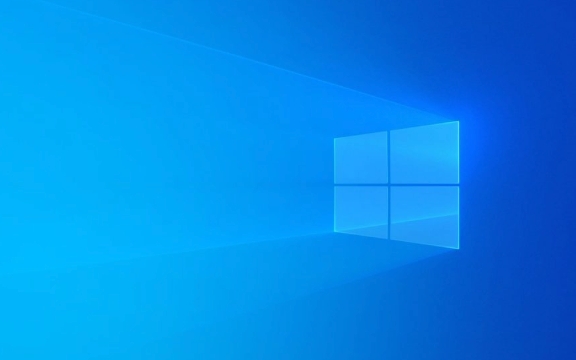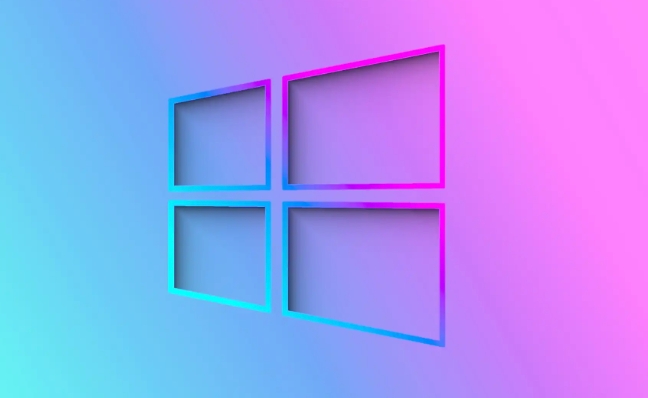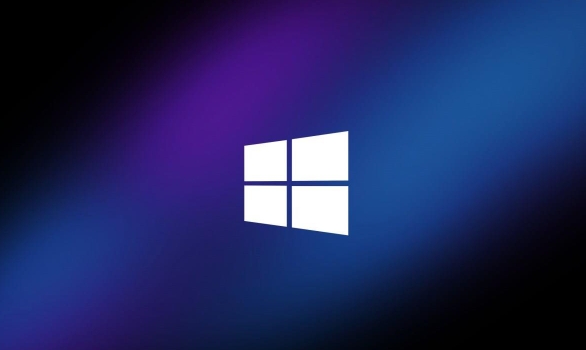 System Tutorial
System Tutorial
 Windows Series
Windows Series
 How to use the whoami command to check user information in Windows
How to use the whoami command to check user information in Windows
How to use the whoami command to check user information in Windows
Aug 03, 2025 am 07:34 AMThe whoami command in Windows displays the current user account and related information. 2. Running "whoami" shows the user in DOMAIN\Username format. 3. Using "whoami /all" provides detailed user information including SID, group memberships, and privileges. 4. "whoami /groups" lists only group memberships such as Administrators or Users. 5. "whoami /priv" displays privileges like SeDebugPrivilege, indicating administrative capabilities. 6. Options like /upn and /fqdn format output for domain environments, showing user principal names or fully qualified domain names. 7. Practical uses include scripting for user verification, troubleshooting access issues, and security audits. 8. The command works in Command Prompt and PowerShell on Windows Vista and later without requiring elevated permissions, providing a quick way to confirm identity and access level.

The whoami command in Windows is a simple but powerful tool that lets you quickly check your current user account and related information. It's especially useful in command-line environments, scripts, or when troubleshooting permissions. Here's how to use it effectively.

Basic Usage: Check Your Current Username
To see the current user logged into the system, open Command Prompt or PowerShell and type:
whoami
This will return the user in the format DOMAIN\Username. For example:

MYPC\JohnDoe
If you're on a local account (not part of a domain), the domain part will be your computer name.
View Detailed User Information
You can get more detailed information using command-line options.

Show User and Group Information
Use the /all flag to display comprehensive details about the current user, including all associated security groups and privileges:
whoami /all
This output includes:
- User name and SID (Security Identifier)
- Group memberships (both built-in and custom)
- Privileges (like
SeShutdownPrivilege,SeDebugPrivilege, etc.)
This is especially helpful for checking if your account has administrative rights or specific access tokens.
List Only Group Memberships
To see just the groups your account belongs to:
whoami /groups
This helps identify whether you’re part of key groups like:
- Administrators
- Users
- Backup Operators
- Remote Desktop Users
Show Only Privileges
To list only the privileges assigned to your account:
whoami /priv
This shows things like:
SeChangeNotifyPrivilege– bypass traverse checkingSeCreateGlobalPrivilege– create global objectsSeDebugPrivilege– debug programs (typically limited to admins)
Some privileges may be listed as "Disabled" — they’re available but not currently active.
Use with Other Options
Display User in Different Formats
You can format the output using the /upn or /fqdn options:
UPN (User Principal Name) format (if applicable):
whoami /upn
Output:
johndoe@mycompany.comFully Qualified Domain Name (FQDN):
whoami /fqdn
Output:
MYDOMAIN\JohnDoe
These are useful in domain environments where multiple naming conventions are used.
Practical Use Cases
- Scripting: Use
whoamiin batch files to verify the running user before performing sensitive operations. - Troubleshooting access issues: If a user can’t access a file or network resource, run
whoami /allto check group memberships and permissions. - Security audits: Quickly verify privilege levels on a system.
Example script snippet:
@echo off
echo Checking current user...
whoami /groups | findstr "Administrators"
if %errorlevel% == 0 (
echo You are an administrator.
) else (
echo You are NOT an administrator.
)Notes and Tips
- Available on Windows Vista and later (including Windows 10 and 11).
- Works in both Command Prompt and PowerShell.
- Requires no special permissions to run (but some output may be limited in restricted accounts).
Basically, whoami is a fast way to confirm identity and access level — no need for GUI navigation. Just a few keystrokes, and you’ve got the info you need.
The above is the detailed content of How to use the whoami command to check user information in Windows. For more information, please follow other related articles on the PHP Chinese website!

Hot AI Tools

Undress AI Tool
Undress images for free

Undresser.AI Undress
AI-powered app for creating realistic nude photos

AI Clothes Remover
Online AI tool for removing clothes from photos.

Clothoff.io
AI clothes remover

Video Face Swap
Swap faces in any video effortlessly with our completely free AI face swap tool!

Hot Article

Hot Tools

Notepad++7.3.1
Easy-to-use and free code editor

SublimeText3 Chinese version
Chinese version, very easy to use

Zend Studio 13.0.1
Powerful PHP integrated development environment

Dreamweaver CS6
Visual web development tools

SublimeText3 Mac version
God-level code editing software (SublimeText3)
 How to Change Font Color on Desktop Icons (Windows 11)
Jul 07, 2025 pm 12:07 PM
How to Change Font Color on Desktop Icons (Windows 11)
Jul 07, 2025 pm 12:07 PM
If you're having trouble reading your desktop icons' text or simply want to personalize your desktop look, you may be looking for a way to change the font color on desktop icons in Windows 11. Unfortunately, Windows 11 doesn't offer an easy built-in
 Fixed Windows 11 Google Chrome not opening
Jul 08, 2025 pm 02:36 PM
Fixed Windows 11 Google Chrome not opening
Jul 08, 2025 pm 02:36 PM
Fixed Windows 11 Google Chrome not opening Google Chrome is the most popular browser right now, but even it sometimes requires help to open on Windows. Then follow the on-screen instructions to complete the process. After completing the above steps, launch Google Chrome again to see if it works properly now. 5. Delete Chrome User Profile If you are still having problems, it may be time to delete Chrome User Profile. This will delete all your personal information, so be sure to back up all relevant data. Typically, you delete the Chrome user profile through the browser itself. But given that you can't open it, here's another way: Turn on Windo
 How to fix second monitor not detected in Windows?
Jul 12, 2025 am 02:27 AM
How to fix second monitor not detected in Windows?
Jul 12, 2025 am 02:27 AM
When Windows cannot detect a second monitor, first check whether the physical connection is normal, including power supply, cable plug-in and interface compatibility, and try to replace the cable or adapter; secondly, update or reinstall the graphics card driver through the Device Manager, and roll back the driver version if necessary; then manually click "Detection" in the display settings to identify the monitor to confirm whether it is correctly identified by the system; finally check whether the monitor input source is switched to the corresponding interface, and confirm whether the graphics card output port connected to the cable is correct. Following the above steps to check in turn, most dual-screen recognition problems can usually be solved.
 Fixed the failure to upload files in Windows Google Chrome
Jul 08, 2025 pm 02:33 PM
Fixed the failure to upload files in Windows Google Chrome
Jul 08, 2025 pm 02:33 PM
Have problems uploading files in Google Chrome? This may be annoying, right? Whether you are attaching documents to emails, sharing images on social media, or submitting important files for work or school, a smooth file upload process is crucial. So, it can be frustrating if your file uploads continue to fail in Chrome on Windows PC. If you're not ready to give up your favorite browser, here are some tips for fixes that can't upload files on Windows Google Chrome 1. Start with Universal Repair Before we learn about any advanced troubleshooting tips, it's best to try some of the basic solutions mentioned below. Troubleshooting Internet connection issues: Internet connection
 Want to Build an Everyday Work Desktop? Get a Mini PC Instead
Jul 08, 2025 am 06:03 AM
Want to Build an Everyday Work Desktop? Get a Mini PC Instead
Jul 08, 2025 am 06:03 AM
Mini PCs have undergone
 How to clear the print queue in Windows?
Jul 11, 2025 am 02:19 AM
How to clear the print queue in Windows?
Jul 11, 2025 am 02:19 AM
When encountering the problem of printing task stuck, clearing the print queue and restarting the PrintSpooler service is an effective solution. First, open the "Device and Printer" interface to find the corresponding printer, right-click the task and select "Cancel" to clear a single task, or click "Cancel all documents" to clear the queue at one time; if the queue is inaccessible, press Win R to enter services.msc to open the service list, find "PrintSpooler" and stop it before starting the service. If necessary, you can manually delete the residual files under the C:\Windows\System32\spool\PRINTERS path to completely solve the problem.
 How to run Command Prompt as an administrator in Windows 10?
Jul 05, 2025 am 02:31 AM
How to run Command Prompt as an administrator in Windows 10?
Jul 05, 2025 am 02:31 AM
To run command prompts as administrator, the most direct way is to search through the Start menu and right-click "Run as administrator"; secondly, use the Win X shortcut menu to select "Command Prompt (Administrator)" or "Windows Terminal (Administrator)"; you can also open the run window through Win R and enter cmd and press Ctrl Shift Enter to force running as administrator; in addition, you can set shortcut properties to achieve automatic running as administrator. All the above methods require administrator permission and confirmation through UAC. Pay attention to security risks during operation.






